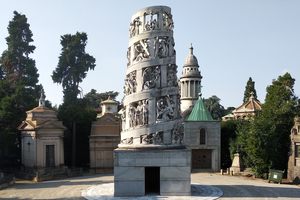Lynmouth Flood Memorial Hall in Devon, England

On the night of August 15, 1952, disaster struck the village of Lynmouth in north Devon. Swollen by days of heavy rainfall, the East and West Lyn rivers burst through their walls, sending a torrential flood hurdling through the seaside town. The fast-moving floodwaters carried hundreds of thousands of pounds of rocks and other debris, which carved a path of destruction through the river valley. Overnight, 34 people were killed, more than 100 buildings were destroyed or seriously damaged, and 28 of the town’s 31 bridges were swept away.
The flood turned Lynmouth upside down. Once the waters subsided, they surveyed the damage: more than 400 people were newly homeless and nearly all of the buildings needed to be repaired or rebuilt. In addition to these immediate needs, the recovery plan included changes that would prevent a future flood from causing the same kind of damage. The Lyn rivers were made deeper and wider and a floodplain was created and barriers were built in the lower part of the village.
Along with rebuilding, people started looking for answers. North Devon had seen 250 times more rainfall than a typical August, and survivors told stories of how the air smelled of sulphur on the afternoon of the floods. A conspiracy theory spread that these heavy rains were unnatural, and caused by cloud seeding experiments carried out by the Royal Air Force known as “Operation Cumulus.” The Ministry of Defence denied these theories, but to this day, many remain unconvinced.
It took nearly six years for Lynmouth to fully recover from the damaged caused by the flood. To mark the completion of the reconstruction work in July 1958, the Lynmouth Flood Memorial Hall opened on the site of the former lifeboat station. Inside the small building, visitors can learn about the history of the village and the powerful flood that changed it forever. There are photographs on display, along with a scale model of the village as it was before the flood.





